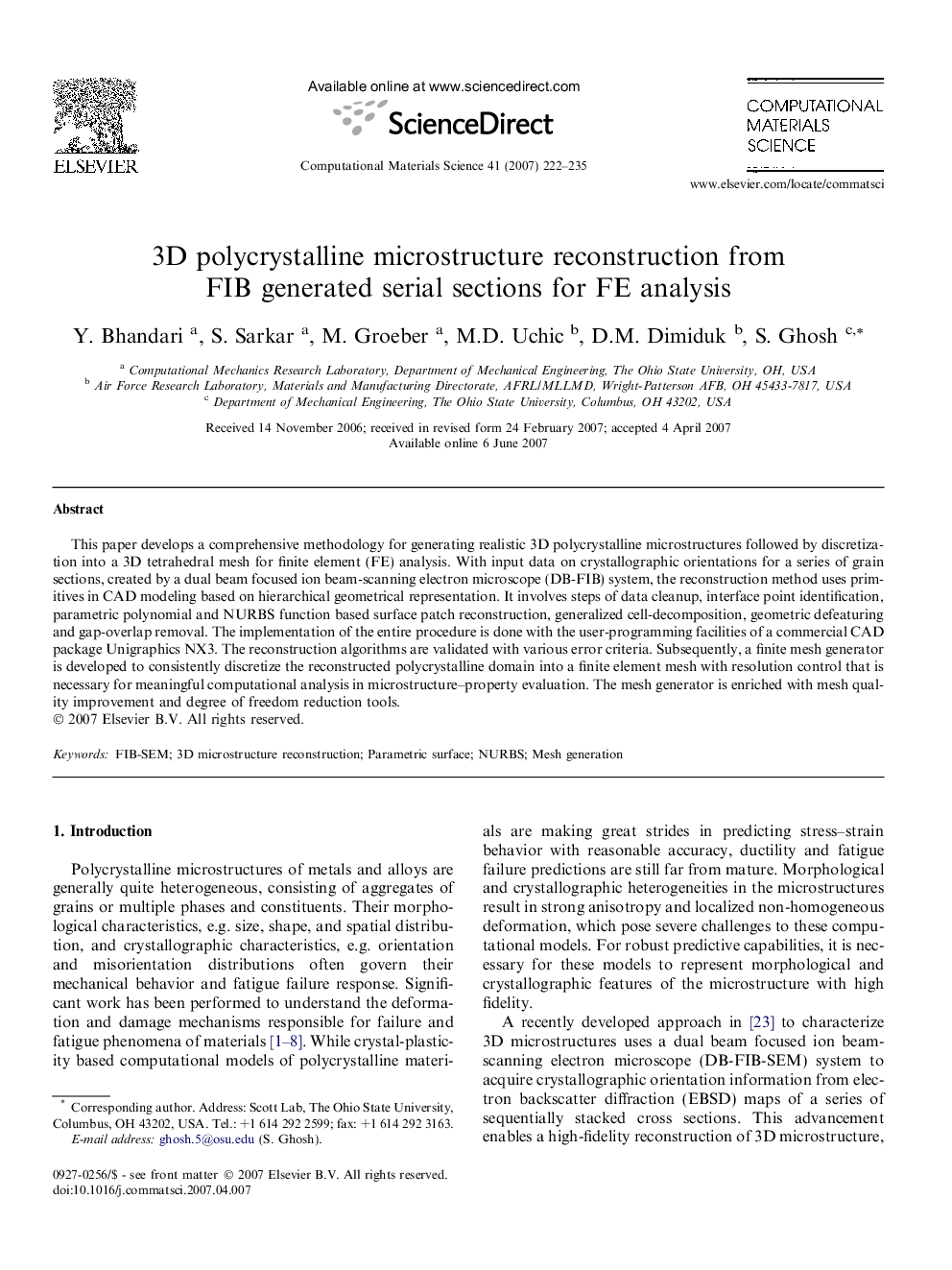| Article ID | Journal | Published Year | Pages | File Type |
|---|---|---|---|---|
| 1564192 | Computational Materials Science | 2007 | 14 Pages |
This paper develops a comprehensive methodology for generating realistic 3D polycrystalline microstructures followed by discretization into a 3D tetrahedral mesh for finite element (FE) analysis. With input data on crystallographic orientations for a series of grain sections, created by a dual beam focused ion beam-scanning electron microscope (DB-FIB) system, the reconstruction method uses primitives in CAD modeling based on hierarchical geometrical representation. It involves steps of data cleanup, interface point identification, parametric polynomial and NURBS function based surface patch reconstruction, generalized cell-decomposition, geometric defeaturing and gap-overlap removal. The implementation of the entire procedure is done with the user-programming facilities of a commercial CAD package Unigraphics NX3. The reconstruction algorithms are validated with various error criteria. Subsequently, a finite mesh generator is developed to consistently discretize the reconstructed polycrystalline domain into a finite element mesh with resolution control that is necessary for meaningful computational analysis in microstructure–property evaluation. The mesh generator is enriched with mesh quality improvement and degree of freedom reduction tools.
